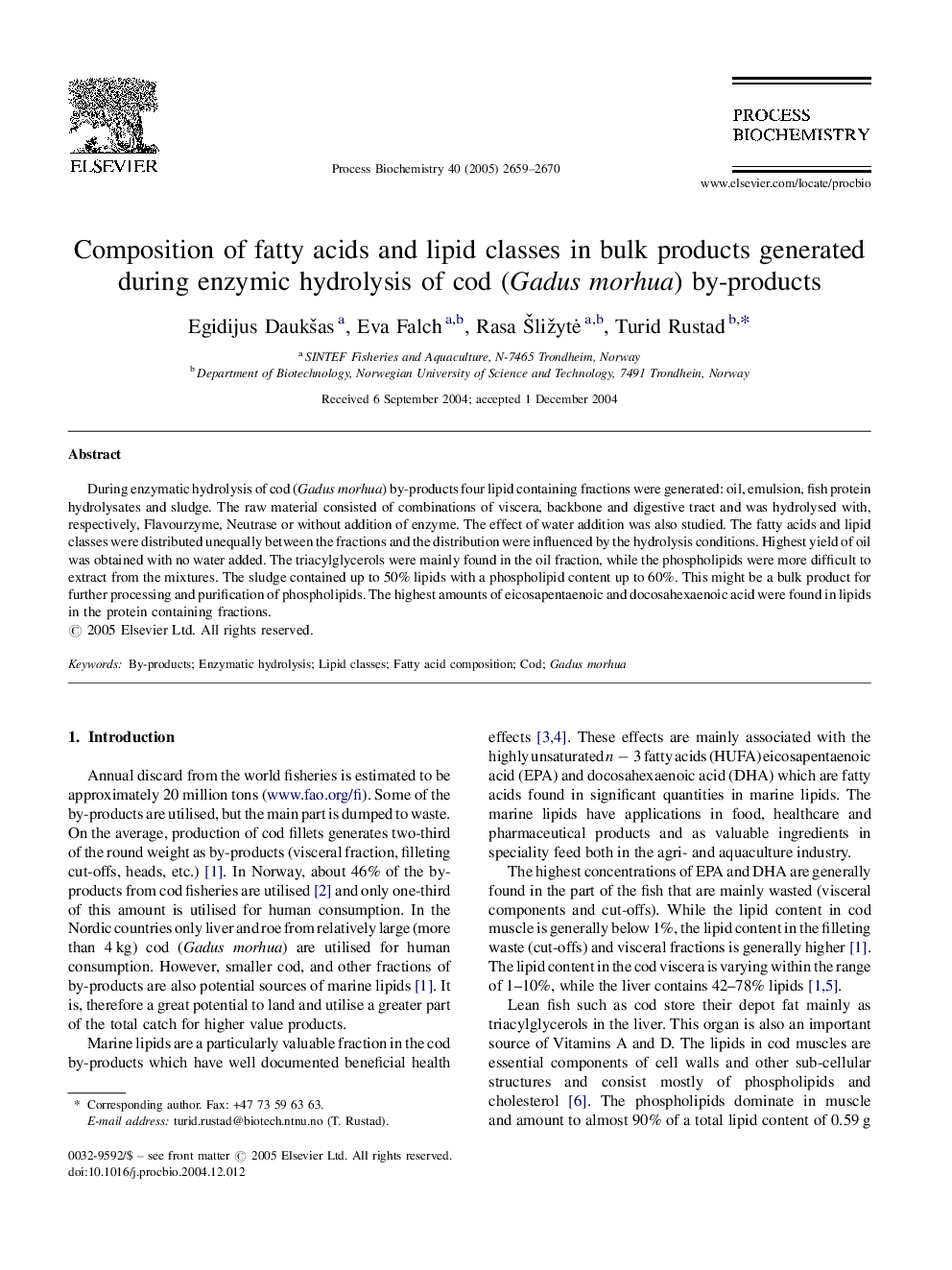| Article ID | Journal | Published Year | Pages | File Type |
|---|---|---|---|---|
| 36453 | Process Biochemistry | 2005 | 12 Pages |
During enzymatic hydrolysis of cod (Gadus morhua) by-products four lipid containing fractions were generated: oil, emulsion, fish protein hydrolysates and sludge. The raw material consisted of combinations of viscera, backbone and digestive tract and was hydrolysed with, respectively, Flavourzyme, Neutrase or without addition of enzyme. The effect of water addition was also studied. The fatty acids and lipid classes were distributed unequally between the fractions and the distribution were influenced by the hydrolysis conditions. Highest yield of oil was obtained with no water added. The triacylglycerols were mainly found in the oil fraction, while the phospholipids were more difficult to extract from the mixtures. The sludge contained up to 50% lipids with a phospholipid content up to 60%. This might be a bulk product for further processing and purification of phospholipids. The highest amounts of eicosapentaenoic and docosahexaenoic acid were found in lipids in the protein containing fractions.
